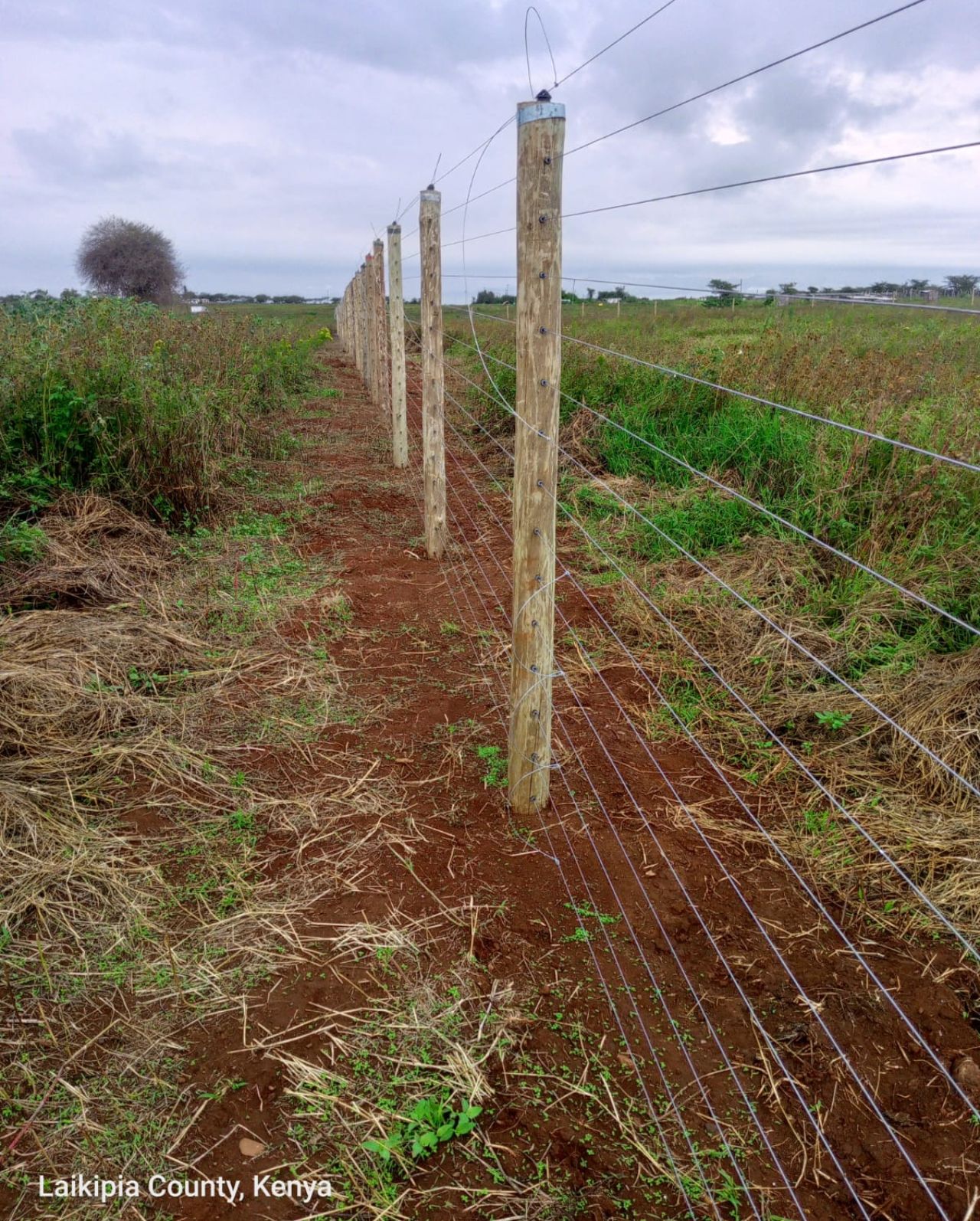Electric Fences and Soil Restoration in Kenya
1. Introduction: Soil Degradation in Kenya and Soil Restoration in Kenya
Kenya faces significant soil degradation due to overgrazing, deforestation, and unsustainable agricultural practices, particularly in arid and semi-arid regions (ASALs) like Samburu and Turkana. Soil erosion, loss of organic matter, and desertification threaten food security and biodiversity. Electric fences emerge as a innovative tool to combat these issues by enabling sustainable land management and Soil Restoration in Kenya.
2. Electric Fencing Technology: Basics and Adaptation in Kenya
- Components: Solar-powered energizers, conductive wires, insulators, and grounding systems. Solar energy is ideal for Kenya’s climate.
- Types: Permanent (for long-term conservation) and mobile (temporary paddocks for rotational grazing).
- Adaptation: Cost-effective models using local materials (e.g., recycled wires) and community training programs by NGOs like the Northern Rangelands Trust (NRT).
3. Role of Electric Fences in Soil Restoration in Kenya
3.1 Controlled Grazing and Rotational Systems
- Rotational Grazing: Livestock are rotated between paddocks, preventing overgrazing. This allows vegetation recovery, reducing soil erosion and enhancing organic matter.
- Example: Maasai pastoralists in Laikipia use mobile fences to manage cattle, leading to a 30% increase in grass cover (Source: KALRO, 2021).
3.2 Exclusion of Destructive Animals
- Wildlife Management: Fences exclude elephants and buffaloes from croplands, minimizing soil compaction and root damage.
- Invasive Species Control: Keeps out bush pigs that disrupt soil structure in Aberdare reforestation zones.
3.3 Protecting Reforestation Efforts
- Nursery Protection: Fences safeguard young trees in community-led afforestation projects (e.g., Mount Kenya Trust), improving soil stability and carbon sequestration.
3.4 Enhancing Vegetative Cover and Soil Health
- Legume Promotion: Managed grazing encourages nitrogen-fixing plants, boosting soil fertility. Livestock manure acts as natural fertilizer.
4. Case Studies on Soil Restoration in Kenya
4.1 Ol Pejeta Conservancy (Laikipia County)
- Approach: Electric fences separate wildlife and livestock, enabling controlled grazing.
- Outcome: 50% reduction in soil erosion; increased biodiversity (black rhino habitat restoration).
4.2 Samburu Community Conservancies
- Initiative: NRT-supported mobile fencing for rotational grazing.
- Result: Vegetation regrowth in 12 months; improved water retention and drought resilience.
5. Challenges in Implementation
- Cost: Initial setup (~$500/km) is prohibitive for smallholders. Solutions: Government subsidies and NGO grants.
- Maintenance: Regular voltage checks and vegetation clearance. Training via cooperatives.
- Social Dynamics: Conflicts between pastoralists and farmers; mitigated through participatory planning.
- Wildlife Disruption: Potential barrier to migration. Strategic corridor design is critical.
6. Solutions and Best Practices
- Community Engagement: Co-design projects with local stakeholders (e.g., Samburu women’s groups).
- Technology Integration: Solar chargers and SMS voltage alerts for maintenance.
- Policy Support: Kenya’s National Climate Change Action Plan promotes electric fencing as a climate-smart practice.
7. Conclusion and Future Outlook
Electric fences are pivotal in Kenya’s soil restoration, offering scalable solutions for sustainable land management. Future efforts should focus on hybrid funding models and IoT-enabled fences for real-time monitoring. With continued innovation and community involvement, Kenya can restore 25% of degraded lands by 2030, aligning with the African Forest Landscape Restoration Initiative (AFR100).
References
- Kenya Agricultural and Livestock Research Organization (KALRO). (2021). Rotational Grazing Impact Report.
- Northern Rangelands Trust. (2022). Community Conservancy Case Studies.
- FAO. (2020). Sustainable Land Management Practices in Sub-Saharan Africa.
1. Kenya Agricultural and Livestock Research Organization (KALRO)
- Website: KALRO Publications
- Search for reports on rotational grazing, soil health, and climate-smart agriculture.
- Example: Sustainable Land Management in Kenya (general resource).
2. Northern Rangelands Trust (NRT)
- Website: NRT Impact Reports
- Case studies on community conservancies, grazing management, and soil restoration.
- Example: Community Conservancies in Northern Kenya.
3. Food and Agriculture Organization (FAO)
- Soil Restoration in Africa:
4. Ol Pejeta Conservancy (Electric Fencing & Soil Management)
- Website: Ol Pejeta Conservancy – Conservation
- Details on wildlife-livestock coexistence and Soil Restoration in Kenya projects.
5. World Agroforestry Centre (ICRAF)
- Soil Health Initiatives:
- Regreening Africa – Kenya.
- Reports on agroforestry and soil carbon sequestration.
6. Kenya’s National Climate Change Action Plan (NCCAP)
- Policy Document:
- Kenya NCCAP 2018–2022 (mentions sustainable land management practices).
7. Research Papers & Journals
- Rotational Grazing and Soil Health:
- Mekuria, W. (2013). “Changes in Soil Organic Carbon and Total Nitrogen Stocks in Response to Land-Use Changes in Kenya.” Link via Springer.
- Electric Fencing in Africa:
- Graham, M. et al. (2012). “The Use of Electric Fences for Reducing Human-Wildlife Conflict.” Link via IUCN.
8. Kenya Wildlife Service (KWS)
- Human-Wildlife Conflict Mitigation:
9. Mount Kenya Trust (Reforestation)
- Website: Mount Kenya Trust – Conservation
- Projects on forest restoration and soil conservation.
10. African Forest Landscape Restoration Initiative (AFR100)
- Kenya’s Commitment:
Additional Databases:
- Google Scholar: Search terms:
- “electric fencing soil restoration Kenya”
- “rotational grazing Kenya impact”
- Research4Life: Access peer-reviewed journals via Research4Life.
If you need access to specific paywalled studies, consider reaching out to:
- Kenyan universities (e.g., University of Nairobi, Egerton University).
- NGOs like The Nature Conservancy Africa.

